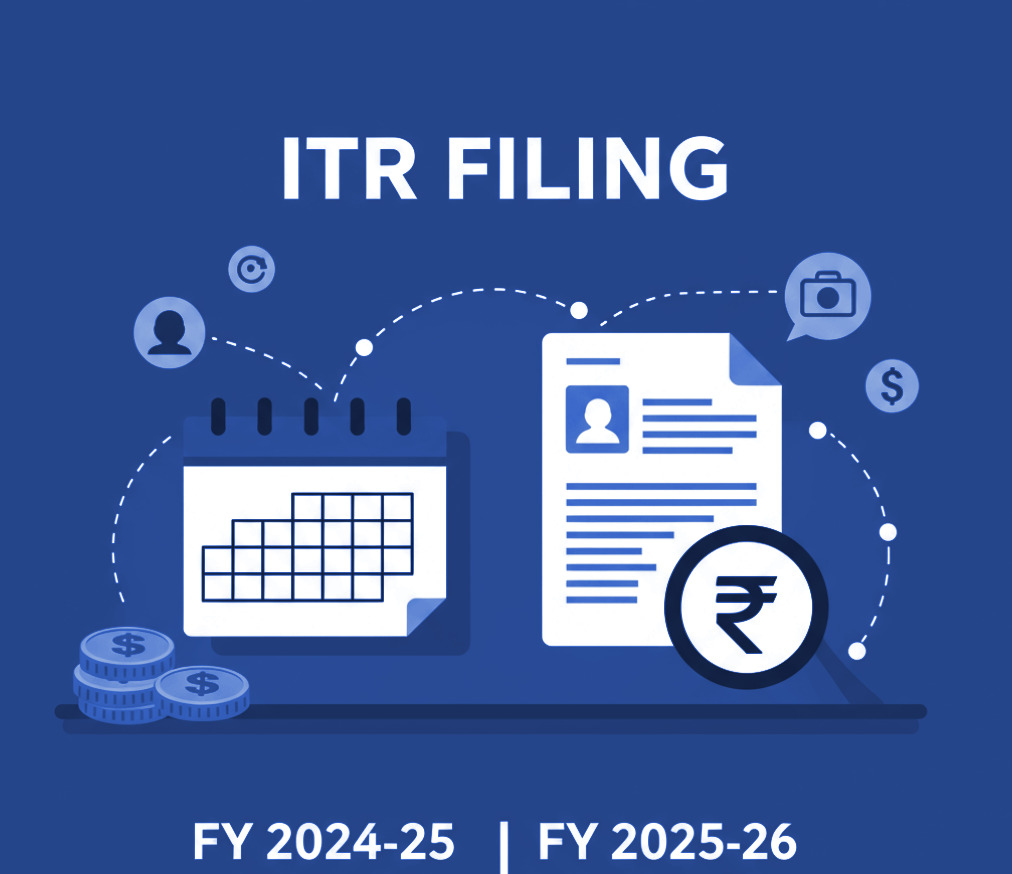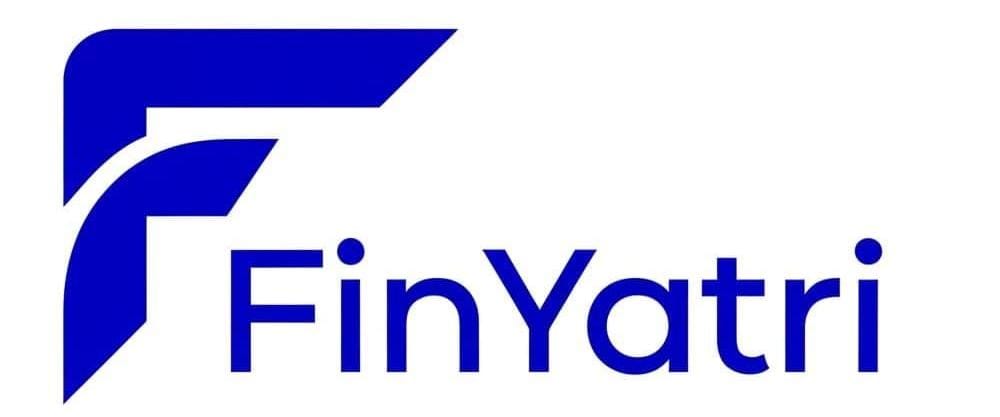Income Tax Slabs for Individuals in India

This article outlines the income tax slabs for individual taxpayers (including HUFs, AOPs, BOIs, and Artificial Juridical Persons) for two financial years:
-
Financial Year 2024-25 (A.Y. 2025-26)
-
Financial Year 2025-26 (A.Y. 2026-27) - Based on Budget 2025 announcements, applicable from April 1, 2025.
Taxpayers can choose between the New Tax Regime (default) or the Old Tax Regime (optional).
Financial Year 2024-25 (Applicable for ITR filing in July, 2025)
New Tax Regime (Default)
(Applicable to all Individuals & HUF)
|
Income Slab (₹) |
Tax Rate |
|
Up to 3,00,000 |
Nil |
|
3,00,001 to 7,00,000 |
5% |
|
7,00,001 to 10,00,000 |
10% |
|
10,00,001 to 12,00,000 |
15% |
|
12,00,001 to 15,00,000 |
20% |
|
Above 15,00,000 |
30% |
-
Standard Deduction: ₹75,000 for salaried individuals and pensioners.
-
Rebate under Section 87A: If taxable income does not exceed ₹7,00,000, a rebate of up to ₹25,000 is available, resulting in nil tax liability.
Old Tax Regime (Optional)
a) For Individuals (Resident or Non-Resident) below 60 years & HUF
|
Income Slab (₹) |
Tax Rate |
|
Up to 2,50,000 |
Nil |
|
2,50,001 to 5,00,000 |
5% |
|
5,00,001 to 10,00,000 |
20% |
|
Above 10,00,000 |
30% |
b) For Resident Senior Citizens (60 years to less than 80 years)
|
Income Slab (₹) |
Tax Rate |
|
Up to 3,00,000 |
Nil |
|
3,00,001 to 5,00,000 |
5% |
|
5,00,001 to 10,00,000 |
20% |
|
Above 10,00,000 |
30% |
c) For Resident Super Senior Citizens (80 years and above)
|
Income Slab (₹) |
Tax Rate |
|
Up to 5,00,000 |
Nil |
|
5,00,001 to 10,00,000 |
20% |
|
Above 10,00,000 |
30% |
-
Standard Deduction: ₹50,000 for salaried individuals and pensioners.
-
Rebate under Section 87A: If taxable income does not exceed ₹5,00,000, a rebate of up to ₹12,500 is available, resulting in nil tax liability.
Financial Year 2025-26 (Applicable for ITR filing in July 2026)
(Based on Budget 2025 announcements, applicable from April 1, 2025)
New Tax Regime (Default)
(Applicable to all Individuals & HUF)
|
Income Slab (₹) |
Tax Rate |
|
Up to 4,00,000 |
Nil |
|
4,00,001 to 8,00,000 |
5% |
|
8,00,001 to 12,00,000 |
10% |
|
12,00,001 to 16,00,000 |
15% |
|
16,00,001 to 20,00,000 |
20% |
|
20,00,001 to 24,00,000 |
25% |
|
Above 24,00,000 |
30% |
-
Standard Deduction: ₹75,000 for salaried individuals and pensioners.
-
Rebate under Section 87A: If taxable income does not exceed ₹12,00,000, a rebate of up to ₹60,000 is available, resulting in nil tax liability. (Effectively, for salaried individuals, income up to ₹12,75,000 may result in nil tax after considering the standard deduction and rebate).
Old Tax Regime (Optional)
(No changes announced in Budget 2025 for the Old Tax Regime. Slabs and benefits are expected to be the same as FY 2024-25.)
Surcharge on Income Tax
Surcharge is an additional tax payable on the amount of income tax if the total taxable income exceeds specified thresholds. The rates of surcharge vary based on the income level and the tax regime chosen.
Surcharge Rates -
(Applicable to Individuals, HUF, AOP, BOI, Artificial Juridical Person)
New Tax Regime:
|
Total Taxable Income |
Surcharge Rate |
|
Above ₹50 lakh and up to ₹1 crore |
10% |
|
Above ₹1 crore and up to ₹2 crore |
15% |
|
Above ₹2 crore |
25% |
(Note: The highest surcharge rate under the New Tax Regime is capped at 25%. This was a change from earlier higher rates for very high-income earners).
Old Tax Regime:
|
Total Taxable Income |
Surcharge Rate |
|
Above ₹50 lakh and up to ₹1 crore |
10% |
|
Above ₹1 crore and up to ₹2 crore |
15% |
|
Above ₹2 crore and up to ₹5 crore |
25% |
|
Above ₹5 crore |
37% |
Marginal Relief:
To prevent a situation where the tax liability (including surcharge) rises by more than the increase in income above the surcharge threshold, a concept called "Marginal Relief" is applied. This ensures that the additional tax payable due to surcharge does not exceed the amount of income that is above the threshold. For example, if an individual's income is slightly above ₹50 lakhs, the marginal relief will ensure the surcharge amount payable is not disproportionately high compared to the income exceeding ₹50 lakhs.
Illustrations & Understanding Check
Basic Tax Calculation (FY 2024-25, New Regime)
Let's assume a salaried individual, Mr. A (age 40), has a total taxable income of ₹9,50,000 for FY 2024-25. He opts for the New Tax Regime.
1. Standard Deduction: ₹9,50,000 - ₹75,000 = ₹8,75,000 (Net Taxable Income)
2. Tax Calculation based on Slabs (New Regime FY 2024-25):
Up to ₹3,00,000: Nil
₹3,00,001 to ₹6,00,000 (i.e., ₹3,00,000 @ 5%): ₹15,000
₹6,00,001 to ₹8,75,000 (i.e., ₹2,75,000 @ 10%): ₹27,500
3. Total Income Tax: ₹15,000 + ₹27,500 = ₹42,500
4. Rebate under Section 87A: Since net taxable income (₹8,75,000) is more than ₹7,00,000, Mr. A is not eligible for the rebate.
5. Health and Education Cess: 4% of ₹42,500 = ₹1,700
6. Total Tax Payable: ₹42,500 + ₹1,700 = ₹44,200
Important Notes (Reiteration):
Cess: A Health and Education Cess of 4% is applicable on the amount of income tax plus surcharge (if any) under both regimes for both financial years.
Default Regime: The New Tax Regime is the default option. Taxpayers need to explicitly opt for the Old Tax Regime if they find it more beneficial.
Let's not wait for the last day to file your return. File it now with FinYatri.




